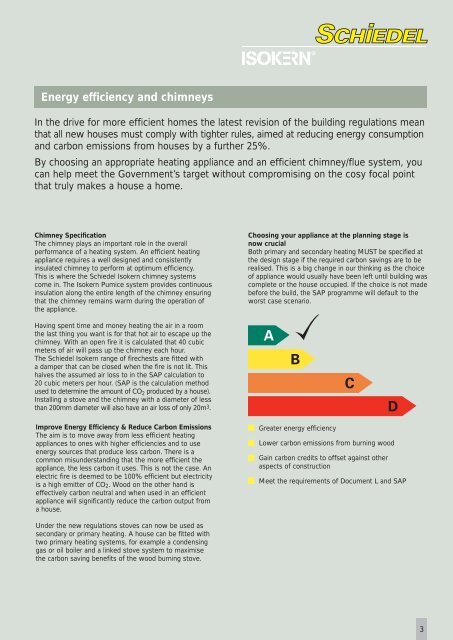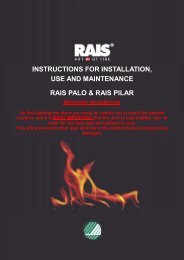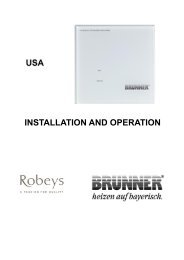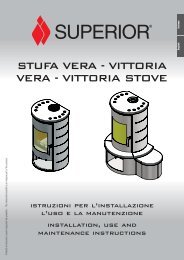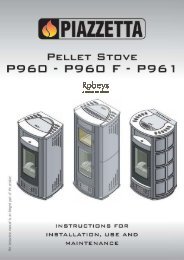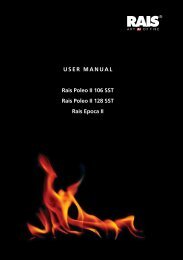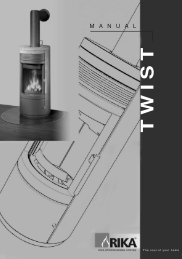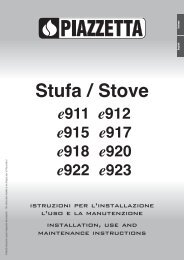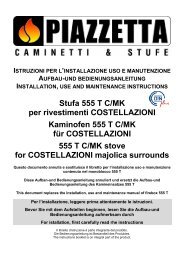Create successful ePaper yourself
Turn your PDF publications into a flip-book with our unique Google optimized e-Paper software.
Energy efficiency and chimneysIn the drive for more efficient homes the latest revision of the building regulations meanthat all new houses must comply with tighter rules, aimed at reducing energy consumptionand carbon emissions from houses by a further 25%.By choosing an appropriate heating appliance and an efficient chimney/flue system, youcan help meet the Government’s target without compromising on the cosy focal pointthat truly makes a house a home.<strong>Chimney</strong> SpecificationThe chimney plays an important role in the overallperformance of a heating system. An efficient heatingappliance requires a well designed and consistentlyinsulated chimney to perform at optimum efficiency.This is where the Schiedel <strong>Isokern</strong> chimney systemscome in. The <strong>Isokern</strong> Pumice system provides continuousinsulation along the entire length of the chimney ensuringthat the chimney remains warm during the operation ofthe appliance.Choosing your appliance at the planning stage isnow crucialBoth primary and secondary heating MUST be specified atthe design stage if the required carbon savings are to berealised. This is a big change in our thinking as the choiceof appliance would usually have been left until building wascomplete or the house occupied. If the choice is not madebefore the build, the SAP programme will default to theworst case scenario.Having spent time and money heating the air in a roomthe last thing you want is for that hot air to escape up thechimney. With an open fire it is calculated that 40 cubicmeters of air will pass up the chimney each hour.The Schiedel <strong>Isokern</strong> range of firechests are fitted witha damper that can be closed when the fire is not lit. Thishalves the assumed air loss to in the SAP calculation to20 cubic meters per hour. (SAP is the calculation methodused to determine the amount of CO 2 produced by a house).Installing a stove and the chimney with a diameter of lessthan 200mm diameter will also have an air loss of only 20m 3 .Improve Energy Efficiency & Reduce Carbon EmissionsThe aim is to move away from less efficient heatingappliances to ones with higher efficiencies and to useenergy sources that produce less carbon. There is acommon misunderstanding that the more efficient theappliance, the less carbon it uses. This is not the case. Anelectric fire is deemed to be 100% efficient but electricityis a high emitter of CO 2 . Wood on the other hand iseffectively carbon neutral and when used in an efficientappliance will significantly reduce the carbon output froma house.Greater energy efficiencyLower carbon emissions from burning woodGain carbon credits to offset against otheraspects of constructionMeet the requirements of Document L and SAPUnder the new regulations stoves can now be used assecondary or primary heating. A house can be fitted withtwo primary heating systems, for example a condensinggas or oil boiler and a linked stove system to maximisethe carbon saving benefits of the wood burning stove.3


